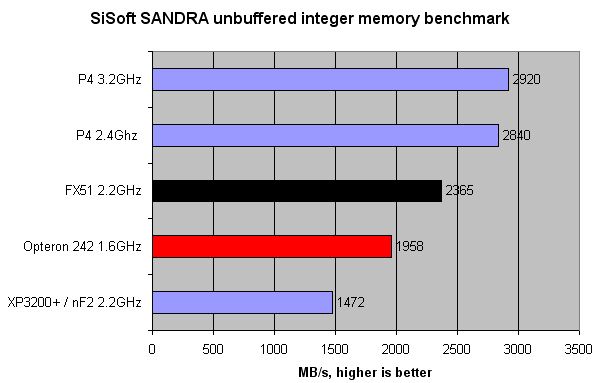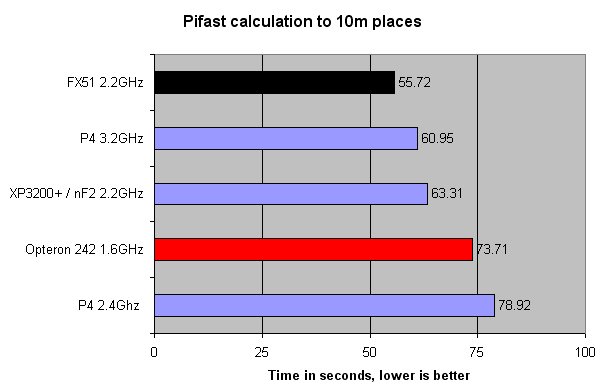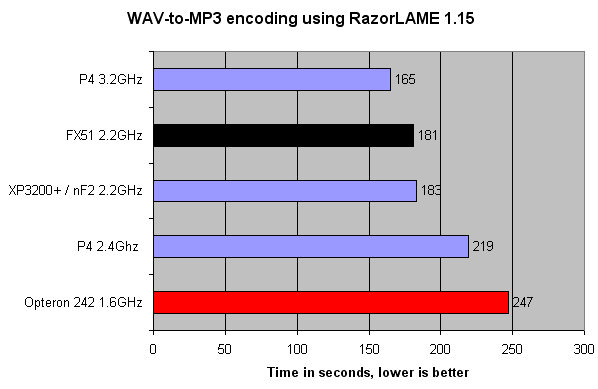Benchmarks I
We'll start off with SiSoft SANDRA's unbuffered integer benchmark and see what it thinks of the new-fangled AMD64 FX-51.

SANDRA reckons that the FX-51 cranks out around 2.4GB/s of unbuffered bandwidth. Remember that the dual 64-bit memory controllers are running at full core speed, so they have have an effective speed of 2200MHz and are able to harness 8.8GB/s of synchronous bandwidth each. That's why the DRAM controller has divisors to keep system memory in some kind of comparative check. The FX is primed for faster and faster memory types, it's just a matter of implementing the changes in the DRAM controller. Compare this with 400MHz for the Barton XP and 800MHz for the Pentium 4. The FX's link scales with CPU speed. It's surprising to see the 1.6GHz Opteron 242 have a lower bandwidth figure, after all, it's running system memory at the same speed; dual-channel DDR400.

Low latency DRAM accesses afforded by on-die memory controllers, a larger L2 cache that has larger transition look-aside buffers, and SOI technology all help to boost the FX-51's work-per-clock-cycle output. At the same speed and bandwidth as the XP3200+ Barton, the FX-51 is no less than 7.59 seconds quicker at calculating the constant Pi to 10 million places. The FX-51 wipes the proverbial floor with both the Pentium 4 3.2GHz and Barton XP3200+, and that's with the 'handicap' of relatively high latency registered RAM. Yum.

Memory-intensive benchmarks should always be faster on the FX-51 than the XP3200+ Barton due to the factors listed above. However, if the benchmark doesn't require masses of data to be stored in cache, like MP3 encoding, clock speed will have the greatest effect. That's why the FX-51 is barely faster than the Barton here. 3 minutes and 1 second to crunch over 600MB of U2 WAVs into 192kb/s MP3 isn't too shabby, though.









